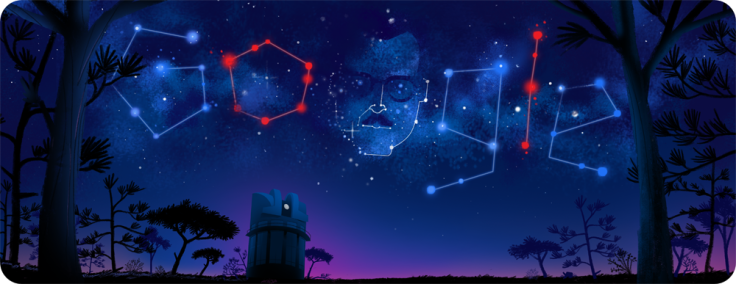Guillermo Haro Facts: Google Doodle Honors Mexican Astronomer On 105th Birthday
The Google Doodle on March 21 honors the Mexican astronomer Guillermo Haro, who first discovered several nebulae and flare stars in the cosmos, with a portrait to mark what would have been his 105th birthday.
Born in Mexico in 1913 during the revolution, he graduated in philosophy from the National Autonomous University and intended to study law before he embarked upon a career in astronomy. Haro was influential in the development of astronomy in his country.
Among his most well-known contributions to science was the discovery of a type of planetary nebulae now known as Herbig-Haro objects. These bright clouds or objects form when jets of ionized gas from young stars collided with nearby clouds of gas and dust.
Herbig-Haro objects are found to have short lives by astronomical standards; they are said to last just a few thousand years, and modify themselves dramatically over just a few years.
Haro was one of the first astronomers to realize that these objects were formed as a result of the cosmically violent process of star formation.
He also discovered what are now called flare stars - red and blue bright stars – found in the region of the Orion constellation. They flare or surge unpredictably across the whole electromagnetic spectrum for a few minutes at a time, and are said to occur at apparently random intervals.

In recent times, astronomers believe that most flare stars are dim red dwarfs; however there are some exceptions whose flares are said to be high-intensity versions of solar flares, determined to be caused by changes in the stars' magnetic fields.
The earth’s two nearest neighbors, Proxima Centauri and Barnard's Star, are flare stars.
Haro also identified the Haro-Chavira comet.
In the mid-20th century, Haro earned fame for his observations and became Mexico’s foremost astronomer. Writer and fellow national Alfonso Reyes dubbed the astronomer "the priest of the telescope."
His contributions in astronomy led to Haro becoming the first Mexican to be elected to the Royal Astronomical Society in 1959.
He met his wife, eminent Mexican journalist Elena Poniatowska, while working at the Tonantzintla observatory in 1945. Poniatowska said in 2013 that she was drawn to the astronomer’s intellect.
“For me, it was very important that a man of this caliber and this intelligence would notice me,” she said. “He flattered me very much.”
Haro also had a distinct sense of humor, his wife had said.
"Guillermo hated the UFOs and the aliens, that’s why he got upset with me when I felt affinity and empathy with the ET," she told reporters in 2014, referring to the Steven Spielberg movie. Poniatowska also wrote an award-winning biography of Haro.
Haro founded the Mexican Academy of Sciences along with some others and served as its first president in 1960. He was awarded the Lomonosov Medal from the USSR Academy of Sciences in 1986. Haro also set up the National Institute of Astrophysics, Optics, and Electronics to help support science students in Mexico.
He died on April 26, 1988.
© Copyright IBTimes 2024. All rights reserved.






















